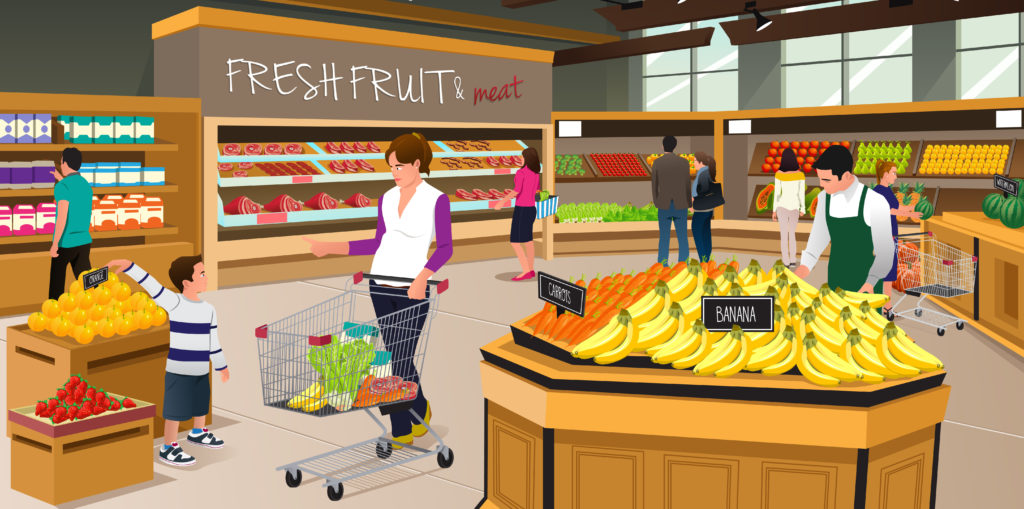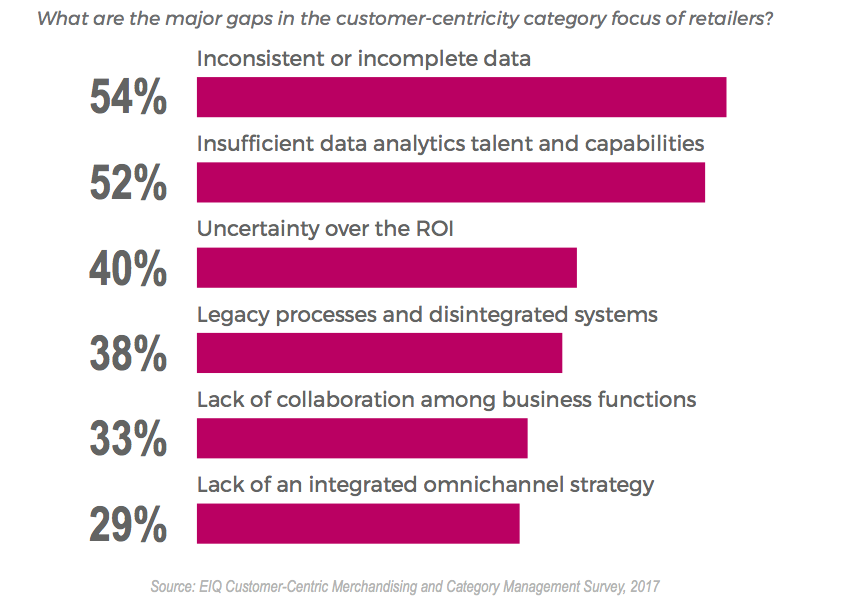
The leg up for online retailers, however, is that such a platform is practically designed around the two biggest trends in food retail today: the customer experience, and customer insights. We’ve talked before about how to create a satisfying customer journey – but gathering valuable customer insights in-store is something that we can expand upon.
Let’s look at a few reasons why customer insights should be one of your top priorities in the coming months, and what methods your business can take to gather and apply this data.
Think In Terms of Conversions
One advantage that has allowed online grocery outlets to succeed is that they see purchases as a process, much like navigating an online website. When the customer enters your store – or website – they slowly travel down a “funnel” that gets them closer to a final purchase.
Along the way, they can be led down different paths to fill their cart and be analyzed in real-time to help incentivize purchases. Once they’ve checked out and left, they’ve done more than just purchase something. Every customer, even those who haven’t bought anything, can give valuable consumer insights.
These insights are powerful. At least 60% of food retailers consider customer behavior when setting up their stores, launching promotions, and pricing their products. These insights can help you to understand purchasing behavior and remove the roadblocks that prevent or discourage customers from building up their cart and making a purchase.
With a large amount of this data, you can begin to build customer profiles and make decisions based on statistics and real behavior.
The Data Gathering Conundrum

One of the biggest challenges for many grocery retailers is not that they don’t see the value in consumer insights. It’s simply that they are unable to capture enough data for it to be useful. Utilizing a modern POS system is a starting point for many businesses, though it only captures one small part of the entire customer journey. To build complete customer profiles and analyze their entire experience in your store, grocery stores need to be more proactive in collecting data.
One of the more effective methods of doing this is utilizing beacons and integrating a mobile app into the store’s Internet-of-Things framework. When a customer enters a store, goes to a certain aisle, or spends a length of time in one location, a beacon will activate. These beacons target the customer with coupons and information on deals through their mobile app. What’s more, the mobile app can be used to easily navigate through the store, and every input can be recorded by the grocery store to analyze in real-time.
How To Use Your Customer Insights
The best way to frame how to use this data is to consider what your grocery consumers want when they come to your store. Start with categorizing items and finding out what types of shopping carts are more common, and bundle these items together as deals for your customers. You can also organize your store’s aisles to have these clustered items be closer together.
In a larger context, grocery chains can also benefit from looking at stores as individual cases all their own. Consumer insights will distinguish regions from one another, which can help shape localized pricing and marketing programs.
Perhaps the most powerful use of consumer insights is the ability to better predict demand. Knowing what items are popular during specific events, seasons, and in certain regions can lower or even eliminate the bane of grocery brands: expiring products.
Understanding your store’s demand gives you more control over your stock, with benefits being twofold: your customers walk away satisfied, and you are able to save on expiring stock and avoid running out of product when it’s in demand.
The Future of Grocery Stores
The integration of ecommerce and brick-and-mortar stores is a lot more than offering multiple channels. It means thinking in broader terms and taking what is valuable from one channel and carrying it over to another.
If you are interested in finding out how your grocery brand can start collecting consumer insights and building a more sophisticated IT framework, contact us today. We have decades of experience in working with companies, their IT departments, and industry partners in creating networking solutions, and our case studies speak for themselves. Find out how you can #WinWithWorldlink.